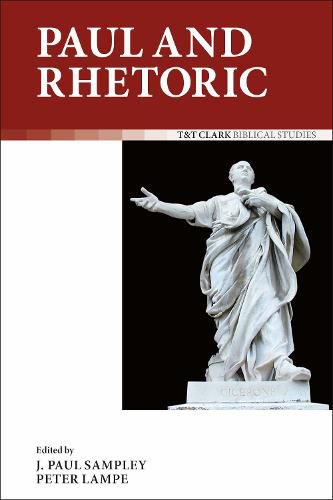Readings Newsletter
Become a Readings Member to make your shopping experience even easier.
Sign in or sign up for free!
You’re not far away from qualifying for FREE standard shipping within Australia
You’ve qualified for FREE standard shipping within Australia
The cart is loading…






Paul and Rhetoric contains essays that have been presented in a seminar called Paul and Rhetoric in the annual meetings of the Studiorum Novi Testamenti Societas, the leading international forum for New Testament and Christian Origin scholars. Translated into English, these essays, by leaders in the field and in the topic, engage and represent modern scholarship on Paul and rhetorical studies.
The foundational essays are listed under the heading State of the Discussion , attempting to take the major rhetorical categories of the time contemporary with Paul (types of rhetoric, invention and arrangement, and figures and tropes) and, first, lays out where the discussion is now. They then note the problems and highlights where continued discussion and deliberation would be helpful. The Broad Questions section asks what can be learned about reading Paul’s letters to congregations in light of ancient epistolography, how theology and rhetoric are related (because the two are often treated as if they are alien to one another), and how ancient rhetoric and ancient psychology are associated with one another.
All in all a volume that illustrates, examines and assesses where we are now in the study of rhetorical traditions in Pauline scholarship, and in some instances suggests the direction of future studies.
$9.00 standard shipping within Australia
FREE standard shipping within Australia for orders over $100.00
Express & International shipping calculated at checkout
Paul and Rhetoric contains essays that have been presented in a seminar called Paul and Rhetoric in the annual meetings of the Studiorum Novi Testamenti Societas, the leading international forum for New Testament and Christian Origin scholars. Translated into English, these essays, by leaders in the field and in the topic, engage and represent modern scholarship on Paul and rhetorical studies.
The foundational essays are listed under the heading State of the Discussion , attempting to take the major rhetorical categories of the time contemporary with Paul (types of rhetoric, invention and arrangement, and figures and tropes) and, first, lays out where the discussion is now. They then note the problems and highlights where continued discussion and deliberation would be helpful. The Broad Questions section asks what can be learned about reading Paul’s letters to congregations in light of ancient epistolography, how theology and rhetoric are related (because the two are often treated as if they are alien to one another), and how ancient rhetoric and ancient psychology are associated with one another.
All in all a volume that illustrates, examines and assesses where we are now in the study of rhetorical traditions in Pauline scholarship, and in some instances suggests the direction of future studies.